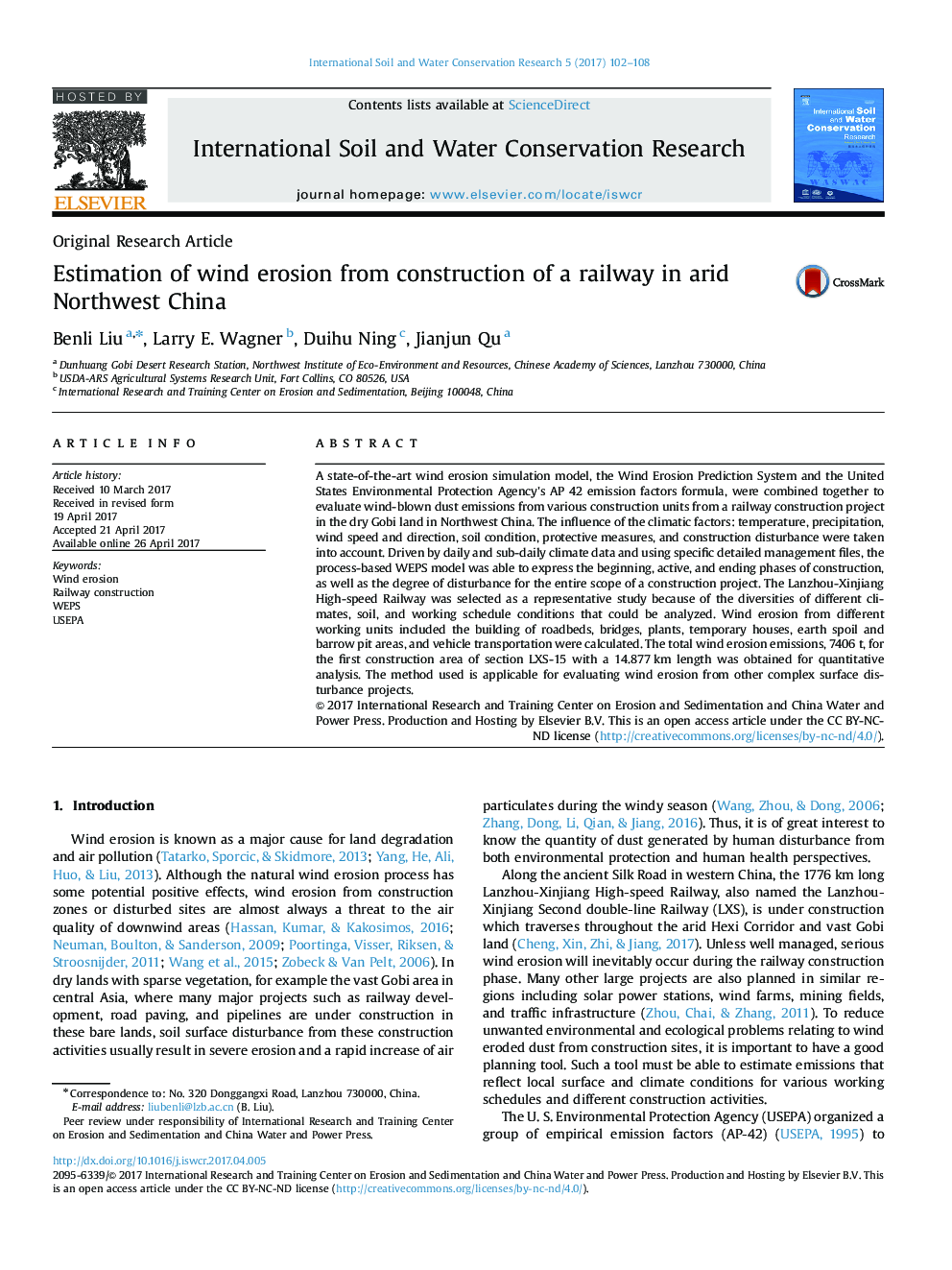| Article ID | Journal | Published Year | Pages | File Type |
|---|---|---|---|---|
| 8865156 | International Soil and Water Conservation Research | 2017 | 7 Pages |
Abstract
A state-of-the-art wind erosion simulation model, the Wind Erosion Prediction System and the United States Environmental Protection Agency's AP 42 emission factors formula, were combined together to evaluate wind-blown dust emissions from various construction units from a railway construction project in the dry Gobi land in Northwest China. The influence of the climatic factors: temperature, precipitation, wind speed and direction, soil condition, protective measures, and construction disturbance were taken into account. Driven by daily and sub-daily climate data and using specific detailed management files, the process-based WEPS model was able to express the beginning, active, and ending phases of construction, as well as the degree of disturbance for the entire scope of a construction project. The Lanzhou-Xinjiang High-speed Railway was selected as a representative study because of the diversities of different climates, soil, and working schedule conditions that could be analyzed. Wind erosion from different working units included the building of roadbeds, bridges, plants, temporary houses, earth spoil and barrow pit areas, and vehicle transportation were calculated. The total wind erosion emissions, 7406Â t, for the first construction area of section LXS-15 with a 14.877Â km length was obtained for quantitative analysis. The method used is applicable for evaluating wind erosion from other complex surface disturbance projects.
Keywords
Related Topics
Physical Sciences and Engineering
Earth and Planetary Sciences
Earth-Surface Processes
Authors
Benli Liu, Larry E. Wagner, Duihu Ning, Jianjun Qu,
